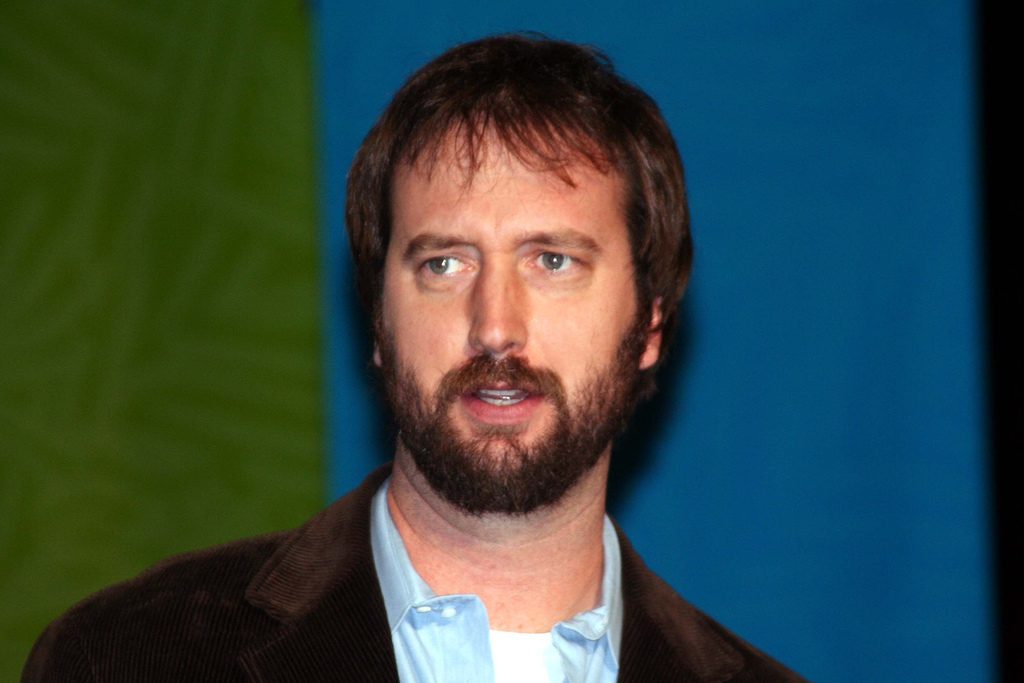The Loneliest Americans

Discrimination is what really binds Asian-Americans together. The early scholars of Asian-American studies came out of the ‘‘Third World Liberation Front’’ of the late ’60s, which pushed against the Eurocentric bent of the academy. When Asian-American-studies programs began spreading in California in the early ’70s, their curriculums grew out of personal narratives of oppression, solidarity forged through the exhumation of common hardships. ‘‘Roots: An Asian-American Reader,’’ one of the first textbooks offered to Asian-American-studies students at U.C.L.A., was published in 1971; the roots of the title referred not to some collective Asian heritage but, the editors wrote, to the ‘‘ ‘roots’ of the issues facing Asians in America.’’
Awl pal Jay Kang spent a year and a half reporting on the fraternity-hazing death of Michael Deng for the New York Times Magazine, and to great effect. The piece is as much about a true and horrifying crime as it is the meaning of the hazy term, “Asian-American.” Read the whole thing here.
Image: Luke Vu via Flickr
These Germans Who Swim To Work Are Happier Than You
Here is a list of common ways to get to work, in reverse order of misery:
- feet
- old-timey streetcar shrouded in mist that is equal parts romantic and melancholy
- bicycle (weather permitting)
- humanely functioning rapid transit
- a bus that shows up more often than every 25 cursed minutes
- the back of a cheerful Great Dane
- the back of an irate pony
- nothing, because your schlumpy ass works at home
- literally anything else
- an automobile
And yet. Here in the land of knee-jerk World War III threats, the vast majority of us working schmos commute to our jobs by car (ALONE, like very sad, lonely dumbasses), despite substantial evidence that this makes everyone who does it goddamned miserable.

Goddamned miserable. Photo: B137/Wikimedia Commons
Pink Slime Neither Pink Nor Slimey
BPI’s signature product, commonly mixed into ground beef, is made from beef chunks, including trimmings, and exposed to bursts of ammonium hydroxide to kill E. coli bacteria and other contaminants.
A microbiologist formerly with the U.S. Department of Agriculture is credited with having coined the term “pink slime.”
After ABC was sued for 5.7 BILLION DOLLARS by Beef Products, Inc. for dysphemizing their “lean finely textured beef” into “pink slime,” the Walt Disney Company has paid $177 million to settle the case. Here is a good paragraph from a 2012 Slate article that clarifies the distinction somewhat, but I’d still argue that “trimmings paste” isn’t much better:
Leaving aside the question of what ABC really knew, it does seem clear that the network’s branding blitz did a lot to promote the panic. The word slime suggests bacterial contamination; it even has a meaning in the lab, referring to a subset of gooey polysaccharides secreted by many microorganisms. The pink part only makes the phrase sound more fleshy and disgusting—like human genitals painted with a film of protozoa. But the labels tell a story that doesn’t match the facts. In truth, the trimmings paste is not particularly unhealthy. Consumer watchdog groups seem to agree that ammoniated, processed beef is no more unsanitary or unappetizing than the other minced and remixed concoctions that emerge from the nation’s meat factories. (It might even be the better choice.) Even Jim Avila of ABC News has conceded, “We’ve never said ‘pink slime’ is unsafe.”
The lesson here is if it walks like a duck and talks like a duck, you should still call it “a subfamily of mostly aquatic waterfowl in the Anatidae family, found in both fresh and seawater.”
The Clientele, "Everyone You Meet"
I can’t say for sure whether or not we’ll make it to September, and at this point I’m not even positive about which possibility I’m pulling for, but in the event that the world fails to end that month will see the release of Music for the Age of Miracles, the first new Clientele record in many years. It’s terrific, as good and gorgeous as almost anything they’ve done, although if you are not a fan there’s nothing new to really change your mind. (The problem is pretty clearly you. You might want to work on that. Here’s an earlier track, see if that helps.) Anyway, enjoy. Who knows how much longer we have left?
The Life Of Bob
The unlikely duo met in October, after Bob (whom Doest named spontaneously when the radio host asked his name) crashed into a hotel window and collapsed near the pool. Doest, an exotic-pet veterinarian who rehabilitates wildlife on the side, learned of the accident via Facebook and rushed over. She quickly realized Bob couldn’t be released, because of his unnatural affinity for human company. So Bob became part of Doest’s rescue flock, which includes macaws, boobies, and a caracara. The birds live on her yard and porch-turned-aviary, next door to her office.
A veterinarian on the island of Curaçao adopted an injured flamingo and named him Bob. Her wildlife photographer cousin started taking pictures of Bob as she brought him around to classrooms to talk about animal habitats and conservation on the small island, and the results are splendid. Take a minute with these wonderful photographs.
New York City, August 7, 2017
 ★ The forecast was grim and accurate: dim and wet. The bodies moving around the apartment mooted the fact that the thermometer readings were lower than before. Hair redistributed its burden of moisture rather than drying out. There was no good way to choose between trying to ignore the thin but insistent rain and putting on the waterproof jacket in the stifling air. Walking felt slow and futile; the rain got heavier and going back outside for lunch seemed pointless. Water beaded on tomatoes at the Greenmarket. It was hot and swampy on the train platforms and cold and raw inside the trains.
★ The forecast was grim and accurate: dim and wet. The bodies moving around the apartment mooted the fact that the thermometer readings were lower than before. Hair redistributed its burden of moisture rather than drying out. There was no good way to choose between trying to ignore the thin but insistent rain and putting on the waterproof jacket in the stifling air. Walking felt slow and futile; the rain got heavier and going back outside for lunch seemed pointless. Water beaded on tomatoes at the Greenmarket. It was hot and swampy on the train platforms and cold and raw inside the trains.
Glen Campbell, 1936-2017
“Country legend Glen Campbell, whose crossover hits ‘Gentle on My Mind,’ ‘By the Time I Get to Phoenix’ and ‘Rhinestone Cowboy’ forged a lasting bridge between country and pop music, died Tuesday. He was 81.”
How Tom Green Let the Trolls Out, Then Vanished

Once upon a time, one of the brightest stars in the comedy firmament was Tom Green, a Canadian kid who had risen from a public-access TV show to a regular slot on MTV. “The Tom Green Show” arrived on the national scene in 1999, tying together various threads of Generation X culture: skateboarding, wearing baggy clothes, having a goatee, treating grown-ups like idiots, acting like a slacker, and pranking people. “Beavis & Butt-Head,” an earlier MTV sensation, had done some of these things, but they were cartoon boys harassing cartoon grown-ups. Green, however, struck teenage me as the distillation of the comedic impulses of our youth movement. Between him and the similarly outrageous, catchphrase-generating South Park, I wondered, what was left to be said?
Almost twenty years have passed, and Tom Green’s shtick has been swallowed whole in a pop culture vortex that left behind the real Tom Green, who is only 45 yet looks considerably older. He’s on the outside looking in, doing subpar stand-up and hosting a TV show from his house that has been trolled by 4chan forum dwellers. By some standards, he’s still wildly successful, self-sufficient and early-retired after a decade of hustling and a bout with ball cancer. By others, he’s no different than many of the Gen-Xers and millennials who watched him: a person marooned among the grown-ups, now technically an adult himself, left to wonder if he missed happiness by a couple minutes at some appointed location. The proto-troll is past his prime, part of a youth movement grown old, and admits to being confused by the pop culture morass, full of increasingly voluble jerks and other pushy insta-fame seekers, that he helped create.
My Husband Is The Reason Your Site Pivoted To Video

A few weeks ago, after another giant media conglomerate announced that it was laying off the bulk of its editorial staff to accommodate the people clamoring for MORE VIDEO, someone tweeted a rhetorical question: Who is this person who watches so much branded content that it’s changing the way we consume media in strange and unpleasant ways?
It was a good tweet and I hated it. Not because it quickly became popular and earned its author followers, but because while everyone was speculating from whence this focus group–spawned monster came, I was trying to hide my shame. You see, I’ve been keeping a terrible secret; one that’s darker than a terminal illness you don’t tell people about until it’s too late and only slightly (slightly) better than a second family in Tucson you’ve been concealing for the past twenty years. I know that video-starved monster. Worse, I married him. And I didn’t sign a fucking prenup.
My husband is 35, lives in San Francisco, and, by his own admission, looks really great in purple. His favorite animal is the baby elephant (although he’ll readily admit that he likes the adults, too) and his least favorite animal is our rabbit, who is named Ms. Cleo and who bites. For six months last year, he took ballet, quitting when his instructors merged two classes together in what he termed a “shameless cash grab that will ruin Adult Beginners for everyone.” He wrote an email urging the company to reconsider because “many students are struggling with the waltz, not just me,” but when his polite queries fell on deaf ears, he decided that maybe the dancing life wasn’t for him. So he picked a different hobby. Now, when he’s home from work or relaxing on the weekend, he watches a never-ending stream of branded content on YouTube.

